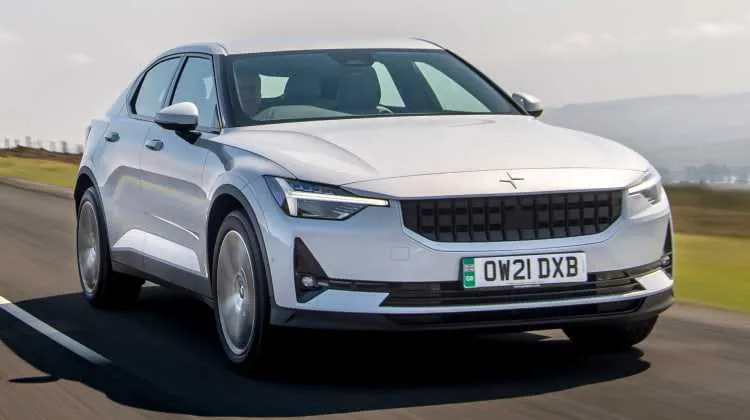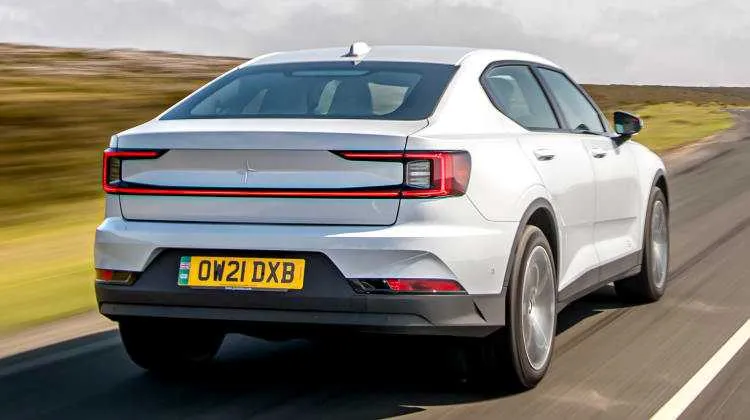
Polestar’s second model – logically titled the 2 – launched to great fanfare last year, providing a genuinely viable alternative in the premium EV market to the Tesla Model 3. It’s handling, quality and technology hit the mark straight away, with a very ‘now’ approach to car building, including features such as a vegan interior.
However, while there are many Model 3 variants, up to now there has only been one sole Polestar 2 option. But the fledgling brand is addressing that with its expanded model range tested here.
The Polestar 2 now comes in Single Motor form, and is also available as a Standard Range car with a smaller battery to the launch model. Priced from £39,900, this is the most affordable Polestar yet, and with a Benefit-in-Kind tax rate of just one per cent, it’ll be an affordable company car.
You certainly don’t lose out on kit though, as the 2’s great 11.2-inch central touchscreen infotainment system powered by Android Auto is present (although this means it lacks Apple Car Play compatibility), while other standard kit includes a 12.3-inch digital dash, four USB charging points, full keyless go including Polestar’s digital key, a powered tailgate, front and rear parking sensors with a rear-view camera, dual-zone climate control, heated front seats, and lots of safety kit. You can add to this latter point with the £3,000 Pilot Pack, too.
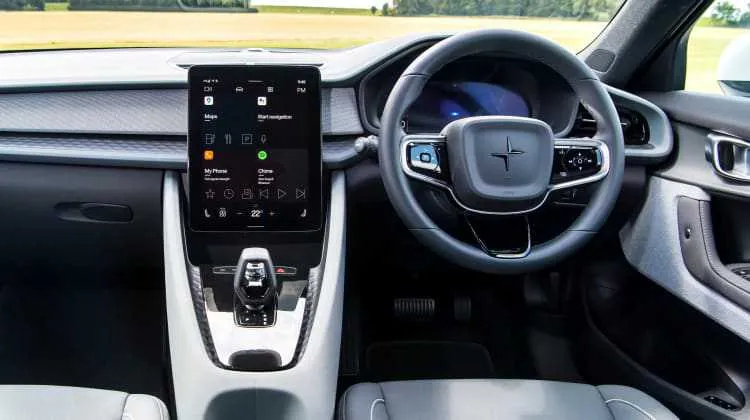
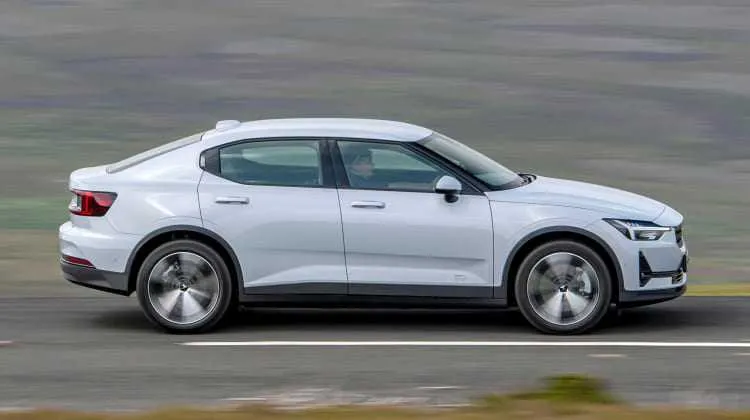
Source
The Standard Range car’s battery has been downsized to 61kWh (usable), providing a WLTP-tested range of up to 273 miles. This is still a very useful claim, with more than enough range for most people’s weekly motoring requirements; our car showed 210 miles on a balmy day and its read-out was accurate.
With up to 150kW DC rapid charging capability it does lag behind some newer rivals – such as the Hyundai Ioniq 5 and the Tesla, of course – but it still betters the Audi Q4 e-tron’s maximum charging rate. Topping up the 2’s battery should take only 35 minutes for a 10 to 80 per cent recharge.
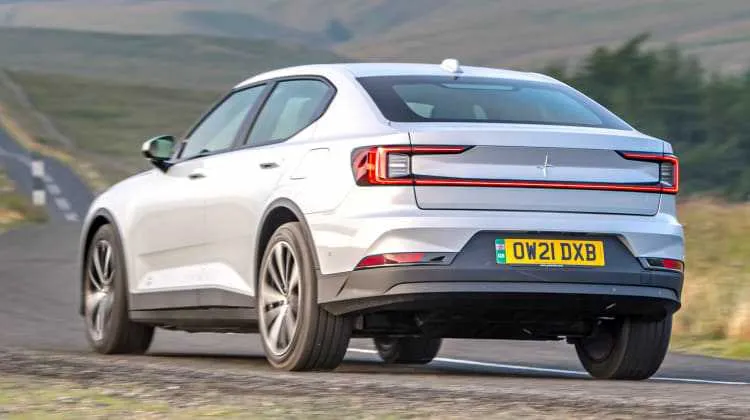
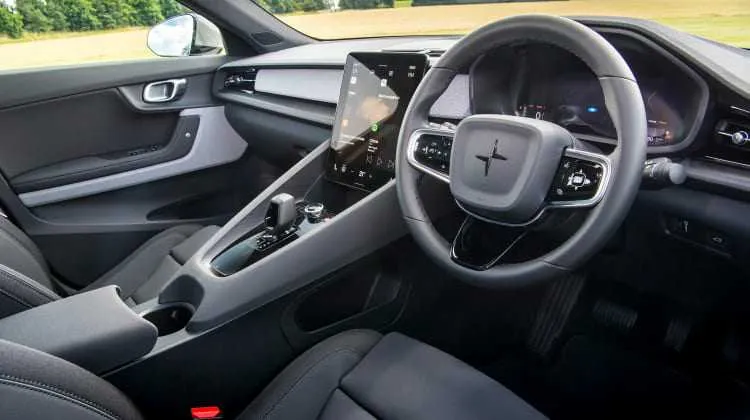


Source
Even plugging in overnight it should only take seven hours to fully charge the battery using the fastest home wallbox chargers, and you’ll rarely get home having almost completely exhausted the battery.
The Single Motor car loses the more potent all-wheel drive model’s rear-mounted motor, but there’s still 221bhp and 330Nm of torque on tap here. Despite being front-wheel drive and the instant torque delivery EVs offer traction is still fine, which means this Polestar 2 will sprint from 0-62mph in 7.4 seconds.
This is more than enough performance, with instant mid-range shove that is strong enough for easy overtakes. However, the focus is clearly on efficiency, so even though the 2 handles with the same direct, responsive and surprisingly agile character (given its weight) as its more powerful brother, exploiting this isn’t necessarily what the car is about, even though it does deliver a slightly more engaging side.
Single Motor cars don’t get the option of Polestar’s £5,000 Performance Pack, which adds larger 20-inch alloys, manually adjustable Ohlins suspension dampers and Brembo brakes, but this is no bad thing.
The 2 is still firm and the ride feels tautly controlled. But even on 19-inch wheels there is a good degree of comfort and composure on offer. While there’s an obvious dynamic benefit to the car’s set-up, it still delivers a mostly smooth ride that compliments the strong refinement. You’ll only hear noticeable motor whine at lower speed.
It’s a nicely judged compromise, with comfort matching the more direct feeling it delivers. Over bad surfaces you will feel more of the road surface beneath you than some premium EV rivals, but it’s marginal.
Practicality is unchanged, with a total of 405 litres in the hatchback’s boot and 35 litres in the Polestar’s nose – ideal for charging cable storage.
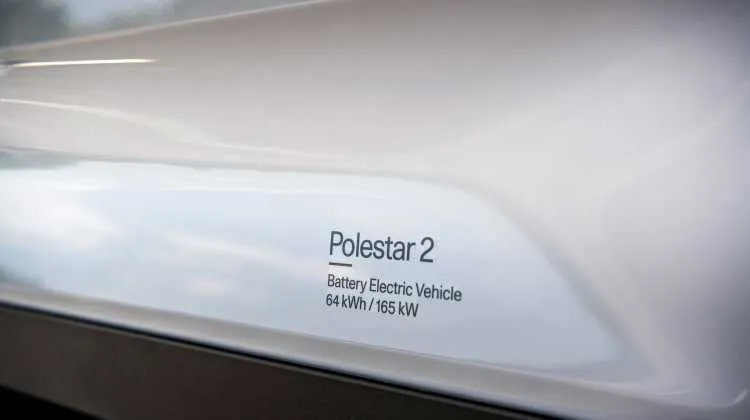
Source
The rear seats are roomy enough. Legroom is a particular highlight, although headroom is a little limited due to the Polestar’s sporty profile, despite it riding slightly higher from the road compared with saloons like the Tesla Model 3. The fact that the 2 is based on Volvo’s CMA platform, which also underpins combustion-engined models, means there is a central tunnel present, which cuts down on usable middle-seat space. Some all-electric rivals don’t feature this packaging constraint.
Quality is still great inside though, with a pleasing mix of materials and textures that give the Polestar genuine premium appeal – and some new trim inlays and fabrics for this Single Motor Standard Range car.
Source

